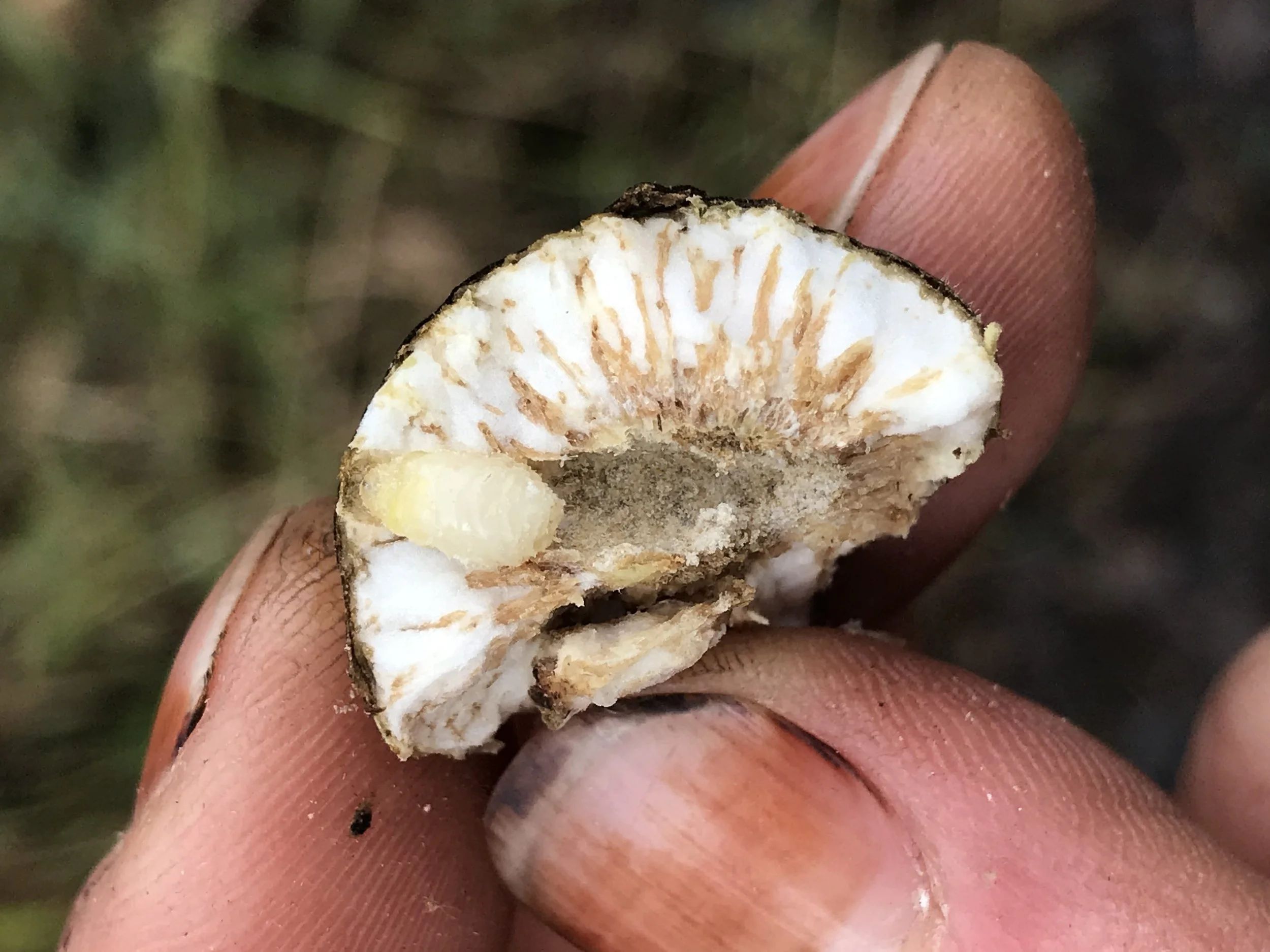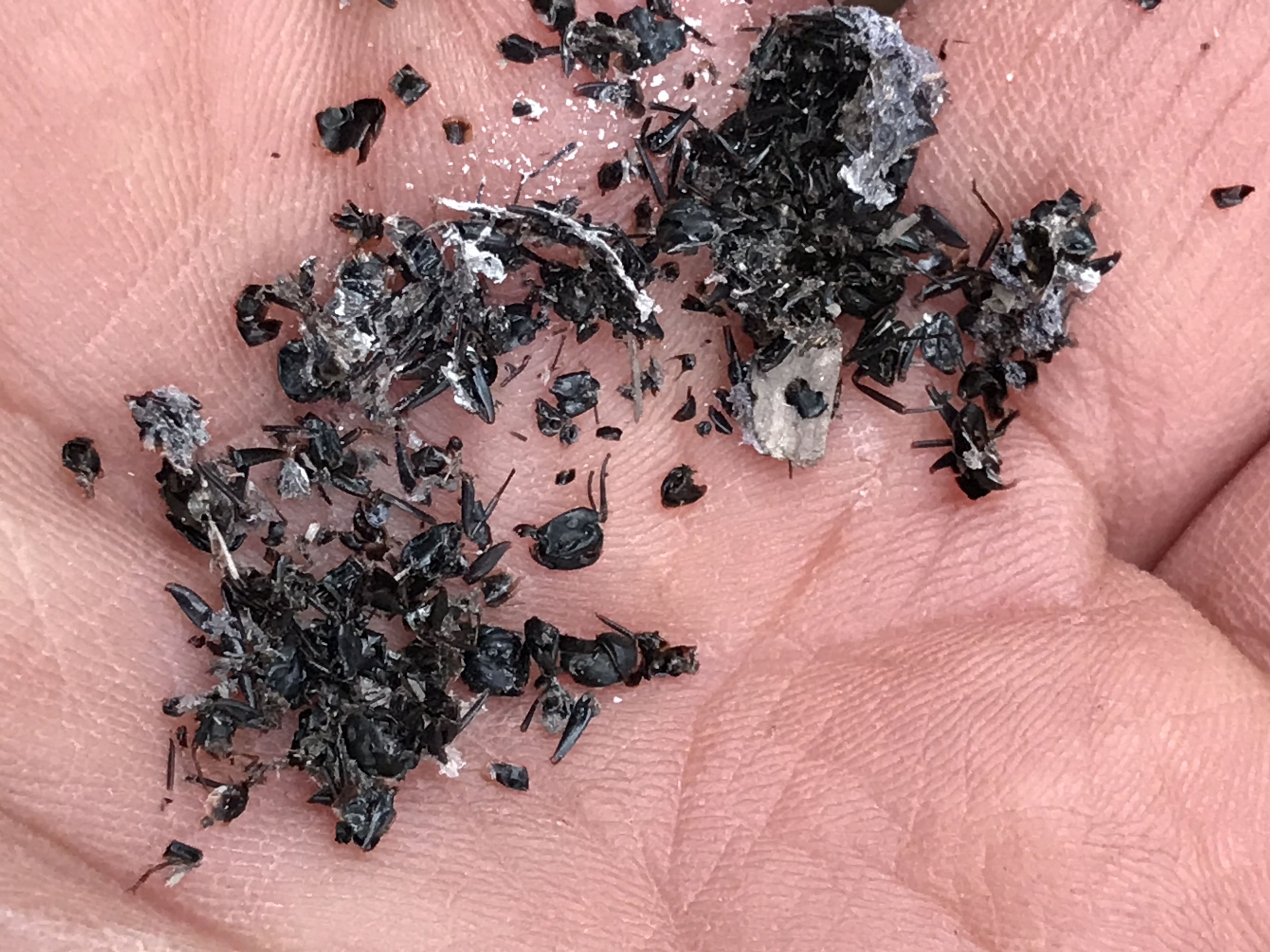
What’s going on out on the land?

A Short List of Bugs I have Eaten
I am very much interested in the edibility of invertebrates. Recognizing that most of the world commonly consumes insects and other inverts, I get to wondering why we in the Northern parts of Turtle Island/North America don’t really consume them.
In light of this wondering I have been setting out to learn as much as I can about which insects I can eat, and how I can learn to prepare them. Below I will be creating an ever expanding list of insects and other inverts I have eaten and how I have prepared them.

Tracking at Saugeen Shores, 2024.09.28
Another beautiful, exciting and overwhelming trip with the tracking apprenticeship to Saugeen Shores. Bird tracks, invert sign, reptiles, and more met us on the sandy shores of Lake Huron.

Three Common Silk Moth Cocoons
Throughout the past few years I have come across a few different large cocoons belonging to Silk Moths, who are large moths in the family Saturniidae, in the order Lepidoptera. As I encounter the cocoons I tend to look them up and try to learn something about them but eventually the individual identifications of each unique species is lost, except maybe the Cecropia. I wanted to write a short blog post, starting with the main three cocoons I encounter, helping to remember who makes which cocoons so I can better remember in the field.

Deeper Questions of Common Sign : Tracking at Kinghurst
This past Saturday was another outing with the Earth Tracks Wildlife Tracking Apprenticeship. We went out to the Kinghurst forest in Grey County, Ontario to see what we could find together. It was a small group of six of us, but that made it a little bit sweeter as we could really dig in to all of the things we were seeing.

Oak Apple Galls at Lake of Bays
Someone in our tracking crew had found a small, pale brown, hollow papery orb with spots on the surface with a couple of holes in it. I recognized it as an Oak Apple Gall, which my partner and I had found last year at Backus Woods. It wasn’t a green one, but it must be the same thing, right?
Last year, I may have looked up a bit on the Oak Apple Gall, but I no longer remember much. It’s like meeting someone again, but not remembering much of the details of your previous conversation. I had to ask some questions again, and here is some of what I have learned.

Differentiating between Cepaea nemoralis and Cepaea hortensis
Snails have captured my attention lately and I am getting more and more curious as time goes on.
It isn’t like my curiosity has suddenly been triggered, but rather, it has grown over the past year or so. This curiosity and interest tends to fall back to one or two specific species which I encounter most often. They are the common species in my area of Southern Ontario in the Cepaea genus, Cepaea hortensis and Cepaea nemoralis. But how do you tell them apart?
There is one way to know, but it can be a bit tricky.

Snail trails on Birch
A lot of questions arise while looking at Snail feeding sign on a Birch tree at the Guelph Arboretum. Why Birch? Are they eating? How are they eating? What is the direction of travel?
Sometimes the answers are out there, and it’s just about looking a little deeper to figure it out.
